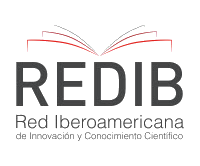ICT, literacy and education in the knowledge society
##plugins.themes.bootstrap3.article.main##
The transformations arised by mediations
The incursion of the New Technologies of Information and Communication (ICT) in the different scenarios of everyday life has brought about profound transformations, generating opportunities, uncertainties and challenges that may become difficult to assume, if you do not have the knowledge, skills and values required.
The digital environment that surrounds the lives of children and young people has not only facilitated and promoted new forms of communication, but has transformed those practices, including reading and conventional-analogical writing, which prevailed for a prolonged period of time. the history of humanity.
Cassany (2000) points out the most important particularities of this digitalized world, from which new generalized scriptural practices have been conceived and rooted in the Internet communities, which favor an instantaneous, continuous, efficient and effective communication. These particularities refer to aspects such as instantaneity and simultaneity, hypertextuality, intertextuality; the appearance of new genres; the opening of the text and the dilution of the author, among others.
Downloads
##plugins.themes.bootstrap3.article.details##
Almenara, J. C. (2007). Las necesidades de las TIC en el ámbito educativo: oportunidades, riesgos y necesidades. Tecnología y Comunicación Educativas, 21 (45) p. 5-19.
Cabero, J. y Romero, R. (2007). Diseño y producción de TIC para la formación. Barcelona, Spain: UOC.
Cassany, D. (1989). Describir el escribir: cómo se aprende a escribir. España: Paidos Ibérica.
Cassany, D. (2000). De lo analógico a lo digital. El futuro de la enseñanza de la composición. Lectura y Vida, 21 (4) p. 6-15.
Cassany, D. (2012). En_ línea Leer y escribir en la red. Barcelona: Anagrama.
Castells, M. (1999). La era de la información: economía, sociedad y cultura, Madrid: Alianza l.
Crystal, D. y Tena, P. (2002). El lenguaje e Internet. Cambridge: University Press.
Cobo, R. y, Pardo, C. Kuklinski, H. 2007. Planeta Web 2.0. Inteligencia colectiva o medios fast food. Grup de Recerca d'Interaccions Digitals, Universitat de Vic. Flacso México. Barcelona / México DF: UVIC.
Escuelas día a día: agenda de lectura y escritura en el aula. Argentina: Homo Sapiens Ediciones, 2012. ProQuest ebrary. Web.
Landow, G. P. (1991). HyperText: The Convergence of Contemporary Critical Theory and Technology Baltimore: Johns Hopkins University Press.
Landow, G. P. y Fernández, A. J. A. (2009). Hipertexto 3.0: La teoría crítica y los nuevos medios en una época de globalización. Barcelona: Paidós.
Prensky, M. (2011). Enseñar a nativos digitales. Madrid: Ediciones SM.
Viladot, M. Á. y Presas, M. Á. V. (2012). Comunicación y grupos sociales. Barcelona: UOC.
UNESCO (2009). Las tecnologías de la información y la comunicación en la enseñanza: Cómo crear nuevos entornos de abierto por medio de las TIC. M anual para docentes. Montevideo: Trilce.














